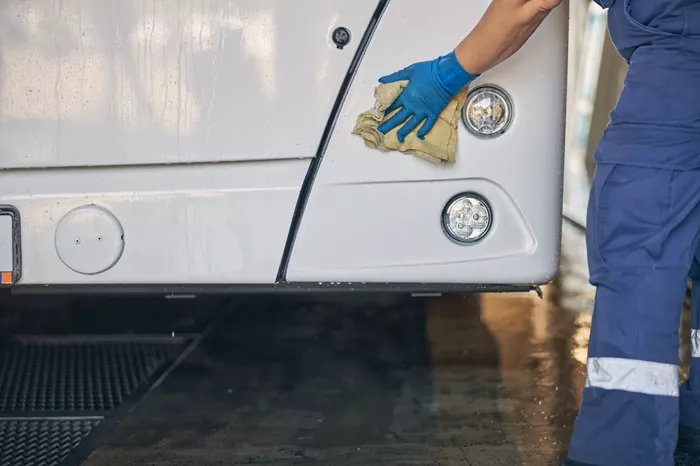Every camper owner knows the feeling. You open your RV after a rainy season and find water stains on the ceiling or damp spots on the floor. Leaks are the most common problem in campers, and they can cause serious damage if not fixed quickly. But why do these leaks happen so often? Let’s explore the reasons behind this frustrating issue.
Campers are built differently from regular houses. They move constantly, face extreme weather, and have many seams where water can enter. These factors make them more likely to develop leaks over time. Understanding where and why leaks happen can help you prevent expensive repairs.
Common Leak Points in Campers
Roof Seams and Seals
The roof is the number one spot for leaks. Most campers use special sealants around roof vents, air conditioners, and seams. Over time, sunlight and weather break down these seals. The constant flexing of the camper body while driving also cracks the sealant.
Check these areas at least twice a year:
- Roof vent surrounds
- Air conditioner mounting
- TV antenna base
- Solar panel installations
- Any roof penetrations
Windows and Doors
Windows and doors have rubber gaskets that wear out. When these gaskets fail, water sneaks in during rainstorms. The problem often starts small – you might notice moisture around the frame before seeing actual drips.
Signs of window/door leaks:
- Discolored walls near windows
- Soft spots in the wall material
- Musty smells after rain
- Visible water trails on the interior
Slide-Out Mechanisms
Slide-outs create extra living space but add potential leak points. The rubber seals around slide-outs get pinched, torn, or simply wear out. Road vibrations loosen the bolts that hold slide-outs in place, creating gaps.
Slide-out leak symptoms:
- Water on the floor near the slide
- Stiff operation when extending
- Visible gaps in the seals
- Mold growth on interior walls
Why Campers Develop Leaks
Constant Movement and Vibration
Unlike houses, campers move constantly. Every bump in the road stresses the seals and seams. Over time, this movement causes materials to separate slightly. Even high-quality sealants can’t withstand years of vibration without maintenance.
Temperature Extremes
Campers face extreme heat and cold. Materials expand in summer and contract in winter. This constant change weakens seals and creates tiny cracks. In freezing weather, trapped water expands and makes these cracks worse.
Poor Maintenance Habits
Many leaks start small but grow because owners don’t inspect regularly. A small crack in roof sealant might take years to cause visible damage inside. By the time you notice the leak, the wood structure could already be rotting.
Manufacturing Shortcuts
Some manufacturers use cheaper materials to keep costs down. Thin sealants or poorly installed components might last just long enough to get past the warranty period. This is especially true in lower-priced campers.
How to Find and Fix Leaks
Leak Detection Methods
Finding leaks early saves money. Here’s how to spot them:
- Water test: Have someone spray water on the roof while you check inside with a flashlight
- Meter check: Use a moisture meter to find hidden damp spots in walls
- Visual inspection: Look for discolored walls, soft spots, or musty smells
- Chalk test: Draw chalk lines around suspected areas – water will change the chalk color
Common Repair Techniques
Once you find a leak, act fast:
- Roof seals: Remove old sealant completely before applying new
- Window gaskets: Replace entire gaskets rather than trying to patch
- Slide-outs: Adjust mechanisms and replace worn seals
- Wall repairs: Cut out damaged sections and replace with new material
For serious leaks, consider professional help. Water damage can weaken your camper’s structure if not repaired properly.
Preventing Future Leaks
Regular Maintenance Schedule
Prevention beats repair. Follow this simple schedule:
- Monthly: Check interior for new moisture signs
- Every 3 months: Inspect all exterior seals
- Twice yearly: Deep clean and reseal roof
- After storms: Check for new leaks
- Before storage: Do complete leak inspection
Quality Sealants and Materials
Don’t skimp on repair materials. Use these proven products:
- Dicor self-leveling sealant for roofs
- Sikaflex for permanent bonds
- Butyl tape for sealing hardware
- EPDM rubber for slide-out seals
Proper Storage Techniques
How you store your camper affects leaks:
- Use a breathable cover (not plastic)
- Park with the front slightly raised for drainage
- Open vents slightly to prevent condensation
- Remove all moisture sources inside
When to Seek Professional Help
Some leaks require expert attention:
- Structural damage to walls or floors
- Electrical systems affected by water
- Mold growth in hard-to-reach areas
- Persistent leaks you can’t locate
- Major roof repairs
Remember – water follows the path of least resistance. The drip you see might start far from the actual leak point. Professionals have special tools to track these hidden leaks.
The Cost of Ignoring Leaks
Small leaks become big problems:
- Wood rot: Weakens walls and floors
- Mold growth: Health hazard and smells bad
- Electrical issues: Corroded wires can fail
- Insulation damage: Reduces heating/cooling efficiency
- Resale value: Water damage lowers your camper’s worth
Repair costs multiply if you wait. A 20tubeofsealanttodaycouldsave2,000 in structural repairs later.
Conclusion
Camper leaks happen to almost every RV owner. The combination of movement, weather, and multiple seams makes leaks inevitable. However, with regular inspections and prompt repairs, you can minimize damage and extend your camper’s life.
Make leak checks part of your routine. Catch problems early, use quality materials for repairs, and don’t ignore small signs of moisture. Your camper will thank you with years of dry, comfortable adventures.
Remember – in the world of camping, a dry camper is a happy camper!
Related topics:
Where to Buy Coleman Airbed: The Ultimate Guide for Campers
Where to Buy a Roof Top Tent The Ultimate Guide for Campers
Where to Buy Sleeping Bags: A Complete Guide for Campers

